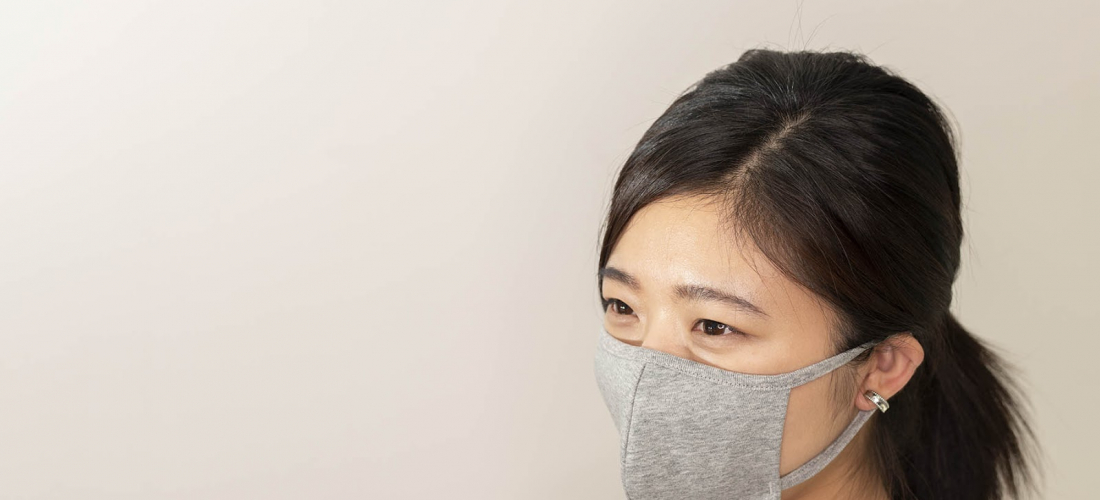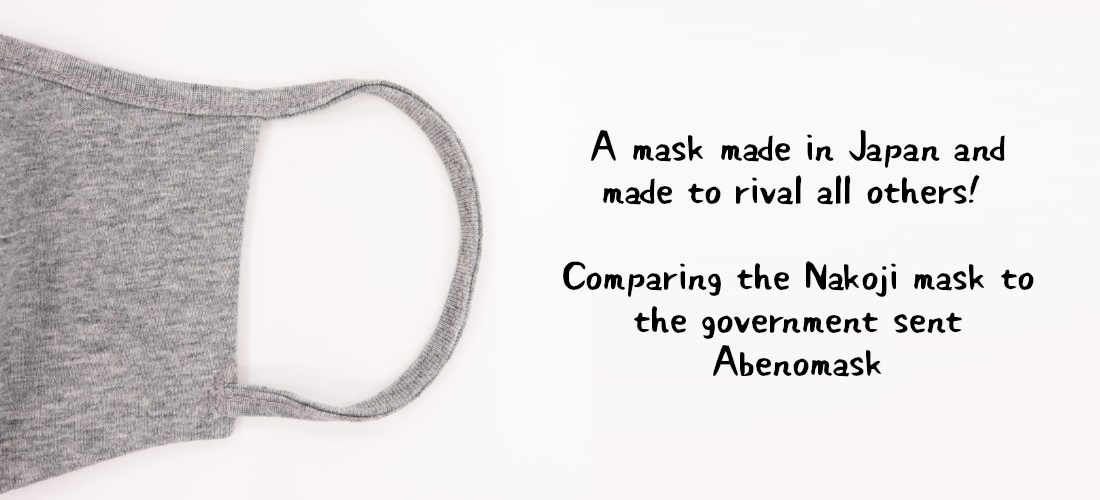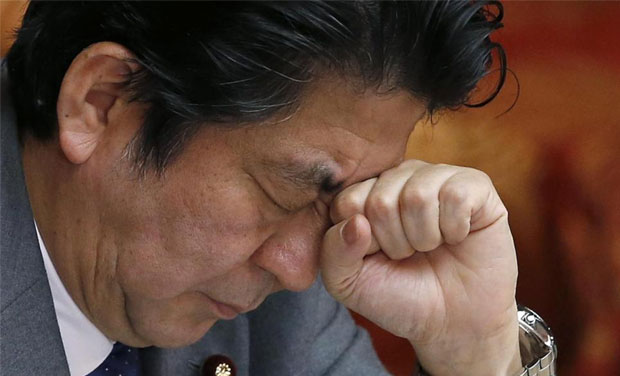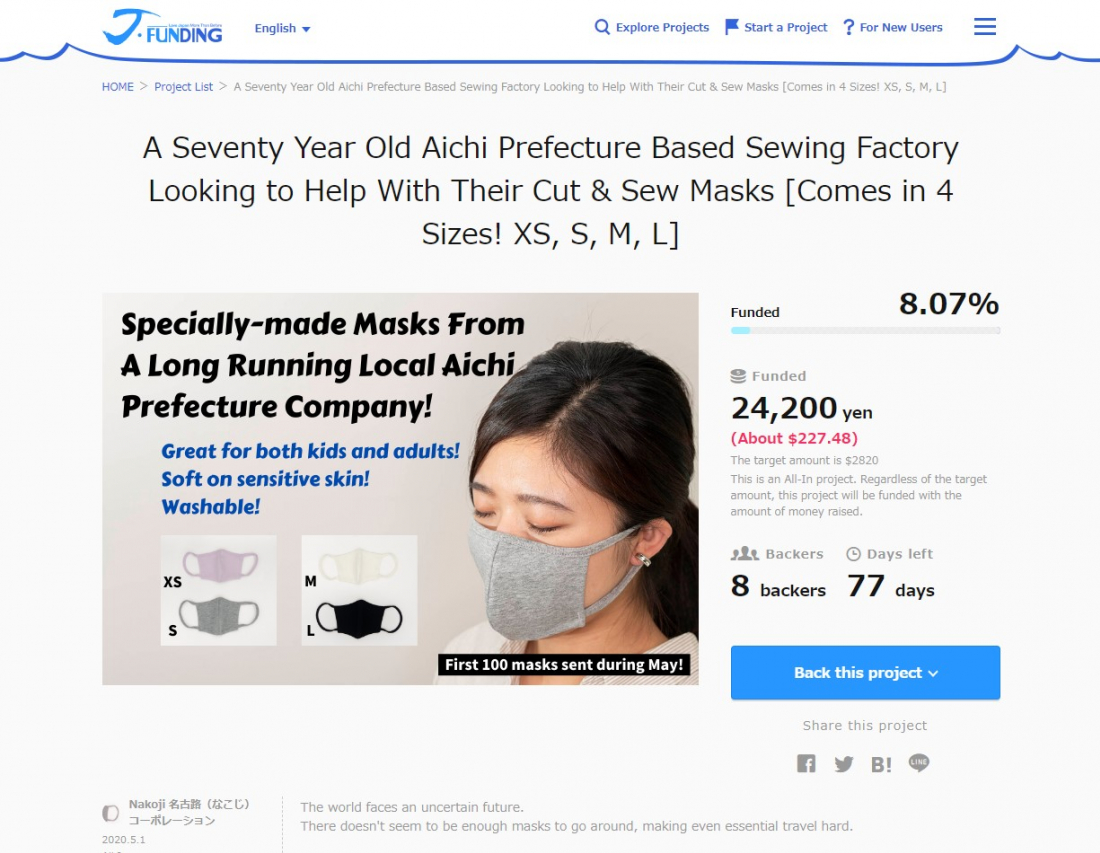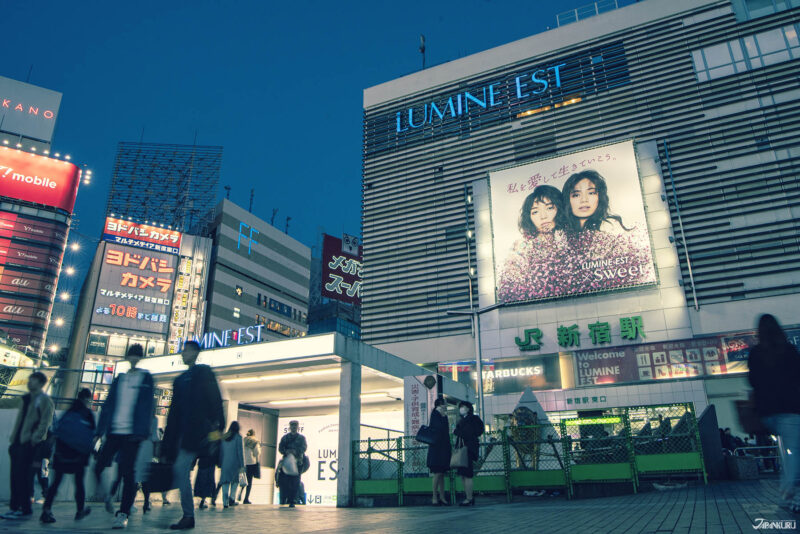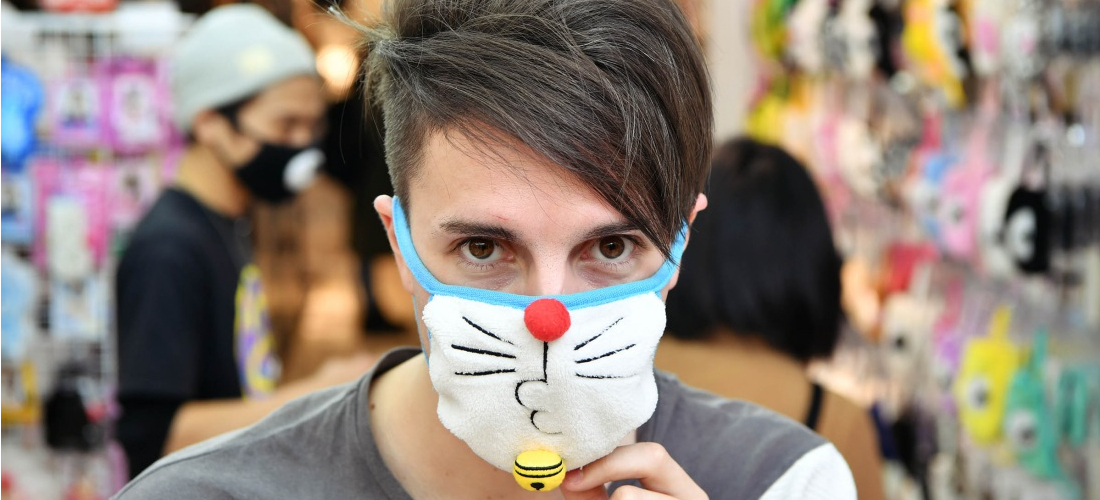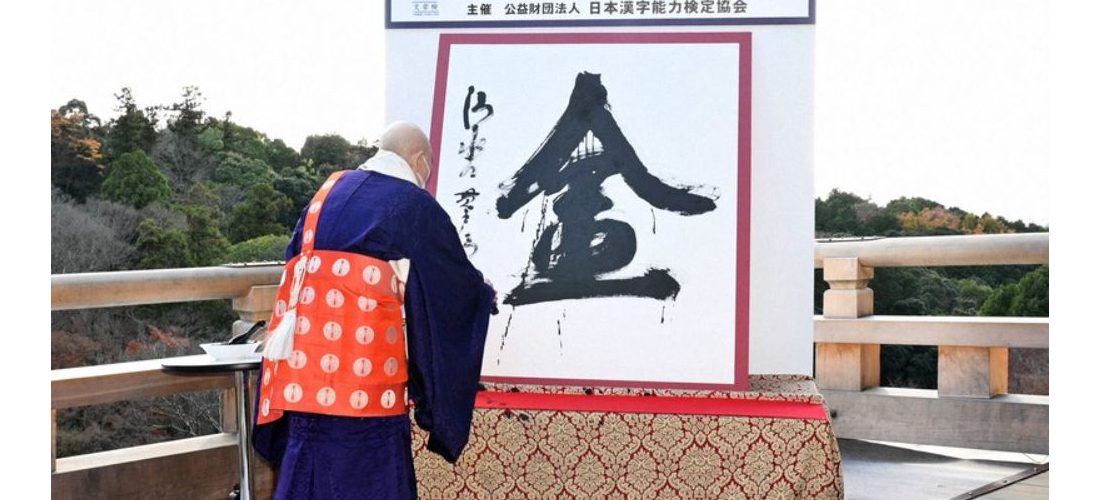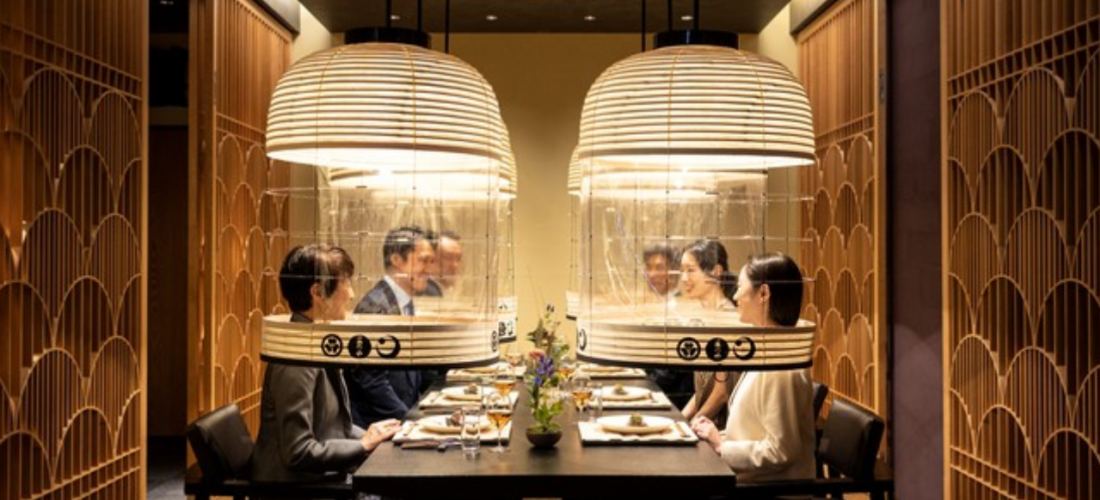CONTENTS
With the corona pandemic affecting the whole world, a small but historied company is looking to bring masks to everyone, but not just normal masks! Reusuable and washable masks that are made to stand everyday use but also comfortable. We take a look at this mask and compare it to the government mask that has been sent out to homes all across Japan!
We want to look at the current masks that the Japanese government are sending out (that have been the centre of several scandals) and show how you would you do much better getting a mask that is now being crowdfunded and is also made in Japan!
Let’s just take a quick look at the failings of the mask handed out by the Japanese government which was coined as the abenomask a play on the economic policies abenomics which is a portmanteau of Abe and economics.
A Mt. Fuji amount of scandals and problems!
The Japanese government was slow to react to the coronavirus, with many thinking that the idea was that if they pushed too hard, they would have to postpone the Tokyo Olympics (which they did), and pay a massive fee to the IOC (which they didn’t), and so while many other first world countries were looking to help keep their citizens home as well as providing welfare for those furloughed, the Japanese government in their infinite wisdom came up with the idea of giving household 2 masks. Now many might see a loophole there, 2 masks per household, meaning a family of three would have to source a mask from somewhere else, as work and so on wasn’t cancelled and a full legal lockdown such as in the UK or Italy, couldn’t be enacted due to Japanese Law. Memes galore ensued (we even wrote about it here: Amid Coronavirus Fears, Japanese Twitter Responds to Abe's 2 Mask Promise with Memes) eventually they announced a period of voluntary stay at home (asking politely people stay at home where possible) and then came the announcement that it will provide 100,000 yen to each resident in Japan.
So many of you might ask what happened to the abenomasks? Well the abenomasks were and are still being sent out. They were first being sent to families first and then to the rest of the general public, but both the delivery and the actual condition of the masks have been criticized. Looking at the actual condition first, Japanese media became abuzz when the first masks where sent out, with many masks being either moldy, having human hairs found in them or even having insects(!) inside them! One user on twitter 大神ひろ@ppsh41_1945 posted this tweet
Abe's mask.
Hell Japan.#Abenomask#アベノマスク pic.twitter.com/JNcunxjEli
— 大神ひろし (@ppsh41_1945) April 21, 2020
which showed some of these masks, and it’s not exactly an appealing site to see. Then with the delivery of the masks also unknown, it has been found that some of the general public have been receiving masks before those that would need them most, with myself already getting masks before many of those with families, small children, or elderly grandparents. It stands to reason that the government hasn’t handled this pandemic to the best of its ability.
Differences between the two masks
Sizes for all!
So let’s take a look at the differences between the abenomask and the washable cut and sew mask available on our sister site.
First is the actual fit of the mask. While the abenomask only covers the nose and mouth (barely) and is one size for all, the cut and sew mask by Nakoji covers the nose to the bottom of the chin, creating a nice fit, and comes in four different sizes! Ranging from XS to L, the masks range from small, for a tiny child, to large, for an adult man. With it covering the whole bottom half of your face, it means that there is less room for particulates to get in. As well as this, it is created so that there is space in front of the mouth and nose, allowing for some space to breathe.
Comfortable to wear all day long!
Another great part of the design of the Nakoji mask, is the ear loops. The Nakoji mask is created from elastic fabric, that is ribbed that means that there shouldn’t be any chaffing on the ears. Now compare this to the thin pieces of elastic that is used on the abenomask, and we can’t see ourselves using these masks for a long time compared to the Nakoji mask.
A quality mask to match the best!
A final point that we want to highlight of the Nakoji mask, is the quality sewing that goes into making the mask. Each mask will be created to have a high degree of precision and accuracy, while looking at the abenomask, they have been created in a rushed fashion to try get to 50 million households by the end of May. This of course has led to some rushed products (as well as many defects leading to a recall of many masks) and so the quality of said masks are worrying.
The abenomask has faced and is continuing to face a multitude of problems, from production to making sure the masks are sanitary, and this is a great chance for many that have the financial mobility to try out the Nakoji Mask and take this stylish and comfortable for a test wear!
Crowdfunding NOW!
You can find the Nakoji Mask available on our sister site, Japankuru Funding https://en.japankurufunding.com/projects/madeinjapan-mask/ with the masks being available as returns. You can back the project and choose the size and colour of the mask you want, as well as backing and getting up to 4 masks in one order! The masks start at 1500 Yen or about $14 USD and are washable and reusable.
Project Information
Project Title: A Seventy Year Old Aichi Prefecture Based Sewing Factory Looking to Help With Their Cut & Sew Masks [Comes in 4 Sizes! XS, S, M, L]
Project URL: https://en.japankurufunding.com/projects/madeinjapan-mask/
Target amount: 300,000 Yen
Returns: Varying amounts of masks from a pack of one to a pack of 4!
PROFILE
Hey everyone! We hope that we can help you keep up to date with all the projects and things we have going on over at Japankuru Funding! We hope that you find the projects on the site as interesting as we do!
COMMENT
FEATURED MEDIA
VIEW MORE
・The new Tokyo flagship for Volcom Japan is a center for all things skateboarding, street fashion, art, and culture, all in the heart of Shibuya! ・Volcom日本旗艦店東京澀谷登場 本格派滑板街頭潮流藝文新據點 #Volcom #japankuru #shibuya #日本購物 #日本潮流 #日本街頭時尚 #澀谷 #東京購物 #東京購物推薦 #東京潮店 #澀谷潮店 #滑板 #雪板 #衝浪 #볼컴 #시부야

Which snacks make the best Japanese souvenirs?~ Jaga Pirika ~ 일본과자 선물 뭐하지?~자가피리카 편~ #pr #calbee #jagapokkuru #japanesesnacks #japanesefood #japanesesouvenir #japantravel #japantrip #naritaairport #hokkaido #나리타국제공항 #일본여행선물 #흔하지않은기념품 #일본쇼핑리스트 #일본과자추천 #고구마과자 #일본간식추천 #일본면세점쇼핑 #개별포장 #일본감자칩 #도쿄나리타공항면세점 #현지인추천 #일본여행 #일본기념품리스트 #자가포쿠루 #자가피리카

Asakusa's Sanja Matsuri, one of the biggest festivals in all of Tokyo, is almost here! Make sure you check out the festival route so you don't miss all the festivities this May. #asakusa #sanjafestival #sanjamatsuri #asakusashrine #sensoji #sensojitemple #japanesefestival #shintoshrine #japaneseculture #tokyo #tokyotrip #tokyotravel #asakusasightseeing #matsuri #japantrip #japantravel #springinjapan #tokyotravel #japankuru #산자마츠리 #아사쿠사 #일본마츠리 #일본여행 #일본5월

Odaiba's DiverCity Tokyo Plaza is home to the famous real-size 20m-tall Unicorn Gundam, and the popular shopping center has even more Gundam on the inside! Check out the Gundam Base Tokyo on the 7th floor for shelves upon shelves of Gunpla, and the Gundam Base Tokyo Annex on the 2nd floor for cool anime merchandise. Both shops have tons of limited-edition items! #pr #odaiba #tokyo #tokyotrip #japantrip #japantravel #PR #divercity #divercitytokyoplaza #tokyoshopping #gundam #unicorngundam #gundambasetokyo #anime #otaku #gunpla #japankuru #오다이바 #다이바시티도쿄 #오다이바건담 #건담 #일본건담 #건프라 #건담베이스도쿄

Evangelion, in miniature!? Tokyo's SMALL WORLDS Miniature Museum is actually a must-see for anime lovers, thanks to the tiny Evangelion Hangar and Tokyo-III... plus a whole universe of other scenes both real and fictional. #smallworlds #smallworldstokyo #tokyotrip #tokyotravel #evangelion #eva #anime #miniature #miniatures #animefigure #japantrip #japantravel #에반게리온 #스몰월드 #에반겔리온 #スモールワールズ #오다이바 #아리아케

Have you sat down for a snack at Sumida Aquarium yet? This aquarium next to Tokyo Skytree is known for its penguins and garden eels, but we can't get enough of their cute snacks! There are lots of good seats around the aquarium, too, so it almost feels like one big cafe. 🐧 • Find out more at Japankuru.com! (Link in bio.) • #japankuru #sumidaaquarium #skytree #tokyoskytree #solamachi #sumida #tokyo #tokyotrip #tokyotravel #aquarium #japanesesweets #themecafe #すみだ水族館 #Japan #日本 #일본 #Japon #ญี่ปุ่น #Japão #япония #japantravel #日本旅行 #日本旅遊 #japan_of_insta #japantrip #traveljapan #japan🇯🇵 #igerstokyo #explorejapan

For anime fans, the Evangelion areas at Small Worlds Miniature Museum are a must see! The tiny miniature people in the Evangelion Hangar look like ants beneath the moving Unit-01, Unit-00, and Unit-02! And over in Tokyo-III, characters like Shinji, Rei, and Katsuragi live life on a miniature scale. #odaiba #tokyo #tokyotrip #japantrip #japantravel #ariake #smallworlds #miniaturemuseum #smallworldstokyo #tokyotravel #evangelion #eva #anime #miniature #miniatures #animefigure #japankuru #스몰월드 #에반게리온 #오다이바 #오다이바관광 #오다이바스몰월드 #미니어쳐

